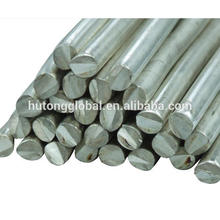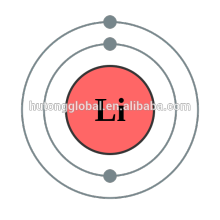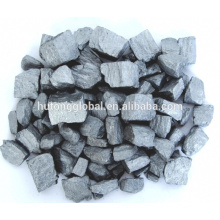Ultraviolet (UV) light curing stone technology for stone curing
2021-04-19
At present, the surface treatment of stone in foreign countries uses thermal curing technology. However, another photo-curing technology is energy-saving and environmentally-friendly technology. It saves energy and consumes only one-fifth of the heat curing. Solvents have a protective effect on the ecological environment and do not emit toxic gases and carbon dioxide into the atmosphere. Therefore, ultraviolet (UV) curing is known as "green technology." Introduce (UV) curing technology below:
First, what is (UV) curing technology
It refers to a light processing process in which a liquid resin is polymerized at a high speed by a certain wavelength of ultraviolet light. The photocuring reaction is essentially a photoinitiated polymerization and crosslinking reaction.
Light-curing coatings are the earliest examples of successful large-scale application of photocuring technology in the industry. They are also the products with the largest production and sales volume in the photocuring industry, and the scale is much larger than that of photocurable inks and photocurable adhesives. Early light-curing coatings were mainly used in wood coating. With the continuous development of technology and market development, the substrates for light-curing coatings have been extended from single wood to paper, various plastics, metals, cement products, Fabrics, leather, stone (protective glue), etc., the appearance also from the original high-gloss type, to matt type, matte type (imitation metal etching) metal flash type, pearl type, bronzing type, texture type and so on. Suitable coating methods include shower coating, roll coating, spray coating, dip coating, and the like. Harbourne, president of FusionUVsytem, the largest light source manufacturer in the United States, has cited the topic of "radiation curing technology everywhere" and listed the wide application of radiation solid technology in all aspects of economy and life. (UV) technology has penetrated into every aspect of traditional goods step by step, making goods more beautiful and making manufacturers more profitable.
Second, the composition of (UV) curing formula and the choice of materials;
Any photocuring formulation includes the following three main components:
1. A polymer (or prepolymer, oligomer, resin) that imparts basic physicochemical properties to the protectant.
2. Monomer, also known as reactive diluent, is mainly used to adjust the viscosity of the protective adhesive system, but also has an effect on the curing rate and material properties.
3. A photoinitiator used to generate free radicals that can initiate polymerization or to leave hands.
In the following, combined with the characteristics of the stone industry, how to select and consider some of the above-mentioned light-curing materials in practical applications are as follows:
Oligomer: It is one of the most proportioned components in photocurable products. It together with reactive diluents often account for more than 90% of the total formulation quality. It is the base resin of photocurable formulations and constitutes the basic properties of photocurable products. This performance basically determines the main properties of the cured material. Of course these properties are related to the degree of photopolymerization. Therefore, some adjustments can be made to the final properties of the product through the diluent and some of its additives. Therefore, whether the synthesis or selection of oligomers is appropriate is undoubtedly an important part of the formulation of (UV) cured materials. At present, the largest market share is the photocuring product of free radical polymerization mechanism. The available oligomers are abundant, mainly including unsaturated polyester, epoxy acrylic resin, urethane acrylic resin, polyester acrylic resin, polyether acrylic acid. Resin, acrylate functionalized polyacrylic resin, and the like. According to the use requirements of the stone, the oligomer which is the main film-forming material and determines its film properties can be selected. The general requirements of the stone protectant are naturally waterproof, anti-fouling, anti-aging, high surface strength, good permeability and long lasting protection. , low-volume, easy-to-operate products. It is also necessary to combine the characteristics of stone, such as stone decoration materials, marble, marble are easy to get a good surface polishing effect, and cheap and easy to get limestone and other stone is difficult to polish, in the process of polishing, the surface is easy to powder It lacks its luster and has more microporous structure, so it is easily eroded by dirt. If you can apply a layer of (uv) protective glue, it can achieve a more beautiful decorative protection effect, and it is beneficial to the attachment of (uV) light-curing adhesive due to its active calcium carbonate composition and its microporous rock structure. Solve the problem of problem (penetration performance is good). In addition, the stone decoration material has high requirements on the impact and abrasion resistance of the cured coating; the scratch resistance also has high requirements. The basic formula can be supplemented with an inorganic filler such as calcium carbonate or talc when necessary. Strong. According to this, the bisphenol A epoxy acrylate resin in epoxy acrylate can be selected, which is characterized by fast photocuring reaction rate, high hardness and tensile strength after curing, high gloss of film layer and chemical resistance. Excellent corrosion performance, for which reason as a basic choice resin.
Monomer: The choice of reactive diluent should be considered in combination with the characteristics of the monomer and the application requirements. Some material suppliers generally provide technical services in this respect. The supplier will use the materials, conditions and requirements of the raw materials required by the supplier. A series of factors suggest their use, users can learn from the manufacturer's recommendations. However, the actual trial effect in production is often difficult to meet the user's requirements at once or to get a proper formula. The main reason is that the various factors of reactive diluent are mutually restricted. For example, when trimethylolpropane triacrylate (MPTA) is used, it is a polyfunctional monomer. Generally, its curing rate is faster than that of a single, bifunctional monomer. When a high curing speed is obtained, The resulting cured layer film becomes brittle or the adhesion property is deteriorated. If a monofunctional monomer (such as a-phenoxyethyl acrylate PHEA) is used to enhance the adhesion of the protective agent in order to slow the shrinkage during curing, the curing speed is slowed down. It is also possible that the manufacturer introduces the user to a single unit that satisfies both the requirements and the other side. The user will find that the monomer is good, the price cannot be accepted, and the user has to give up. Generally speaking, reasonable selection of reactive diluents should be considered comprehensively. It is required to pay close attention to the advantages and disadvantages of all parties and balance various influencing factors. The ingenious compatibility but with various types of monomers can achieve better results. Most photocurable materials are formulated with two or more reactive diluents to balance and balance various factors to achieve the benefits. For example, TPGDA is commonly used when using TMPTA.
To this end, it is necessary to have a full understanding of the characteristics of various monomers and their influencing factors, in order to make a good choice in practical applications.
1. Dilution: This is one of the primary considerations in monomer selection. Good dilution indicates that the use of less monomer in the formulation can effectively reduce the viscosity of the (UV) cured adhesive, which is generally monofunctional. The monomer has a low viscosity and a strong dilution. The polyfunctional monomer has a higher viscosity and a poorer dilution.
2. Reactivity: The addition of reactive diluents increases the rate of curing reaction while reducing the adhesion of the system. The curing speed of the monomer is accelerated with the increase of the flying energy. Generally, the diluent of different functionalities has a photocuring speed of trifunctionality greater than difunctionality and difunctionality greater than monofunctionality.
3. Shrinkage: Free radical radiation curing systems are usually cured
With the shrinkage of volume, shrinkage is an unfavorable factor in most applications. When coating is cured on substrates such as metal, glass, plastic, and stone, shrinkage will result in poor adhesion. When applied to a soft substrate, such as paper, plastic film, etc., shrinkage during curing causes wrinkles in the substrate. For this reason, to improve the adhesion of the coating film, it is necessary to select a monomer having a low shrinkage ratio as a diluent. Generally, the higher the functionality, the more double bonds are involved in the curing reaction and the greater the shrinkage. Therefore, in the protective rubber formulation, some single-cell monomers are often used as a diluent to adjust the viscosity.
4. Surface tension: It is an important indicator affecting the performance of photocured colloids. The surface tension of reactive diluents is a factor that affects the interaction with various substrates. Such as wettability, adhesion, permeability and leveling are affected by surface tension, low surface tension glue can be wetted and spread on the stone surface, on the contrary, it can not effectively wet and spread, it will Like the drops of water falling on the surface of the paraffin, it will form separate drops of water without spreading. Although the wettability depends on the surface tension of the protective system, that is, including monomers, oligomers, photoinitiators, additives, etc., the addition of a leveling agent as an additive in the formulation is intended to reduce the entire The surface tension of the system. Because the amount of reactive diluent in the formulation is larger, and the surface tension of various monomers is quite different, the selection of a monomer with a suitable surface tension as a diluent is also an effective means for adjusting the surface tension.
5. Toxicity, irritancy and odor: Generally speaking, monomers are toxic, but their toxicity, irritancy and odor are also different due to different chemical structures. In principle, low toxicity and low irritancy should be preferred. A monomer having no bad odor is used as a reactive diluent. The trisexity of the above monomers is caused by steam generation, and the reduction of volatility for this purpose reduces the toxicity, irritation and odor. For example, after ethoxy-modified TMP-TA, it is TMP(E0)TA, and the volatility decreases after the introduction of ethoxy group, and the irritant decreases accordingly.
Photoinitiator: Photoinitiator is a key component of photocuring systems because it relates to the ability of the protective gum system formulation to rapidly convert from a liquid to a solid-crosslinking cure during light irradiation. At present, ultraviolet (UV) curing technology has different action mechanisms for producing active radicals according to photoinitiators, and can be mainly divided into two types: cracking type photoinitiators and hydrogen abstraction type photoinitiators. The 2-hydroxyalkylphenone in the cracking photoinitiator has a high photoinitiating activity and is the most successful photoinitiator for application development. The simplest structure of 2-hydroxyalkylphenone is 2-hydroxy-2-methyl-1-phenylacetone-1 (HUP), which is called Darocurll 73 (Ciba), which is the most widely used in domestic photocuring industry. One of the photoinitiators, another 1-hydroxy-cyclohexyl ketone (HCPK), trade name of gacuel 84, is a relatively high photoinitiating activity and is also one of the initiators widely used in the domestic industry. The two photoinitiators are well received by users with excellent photoinitiation performance and excellent thermal stability and their comprehensive balance performance. As a hydrogen abstraction photoinitiator, first of all, low cost is a reason that some customers are willing to accept, which can be used for In some formulations with low added value and low quality requirements, photoinitiators are an indispensable component in (UV) curable materials. Generally, light inducing agents will produce excess, and the remaining initiator will remain in the light. During curing, it will decompose and generate free radicals in the outdoor, which will further lead to polymerization and cross-linking, making the coating yellow and brittle, affecting the physical properties and service life of the product. Therefore, research and development of new light-induced ones has become one. In recent years, acetylphosphorus oxide photoinitiators have been developed at home and abroad. These photoinitiators include TPO~1 developed by BASF Tsinghua Unisplendour Yingli Chemical Co., Ltd. and Ciba-type BAPO-type photoinitiators. The UV absorption peak is longer than the conventional photoinitiators such as BP, 1173, 184, 651, 907, etc. These photoinitiators are not only suitable for pigmented curing systems, but also have a high decomposition rate and produce white High base efficiency, light hole after illumination
The remaining amount of the agent is almost zero.
In practical applications, in addition to the above components, it is often necessary to add various auxiliaries for the purpose of achieving the use. In order to achieve good flow flatness, it is necessary to add a leveling agent. In order to suppress bubbles in the system, it is necessary to add an antifoaming agent or the like. Generally, various additives widely used in traditional coatings can be directly applied to the (UV) curing system, but the characteristics of the (UV) curing system should be taken into account, and the time from the liquid to the formation of the cured film is short. (Several seconds) During this period, no solvent is volatilized, and the selection of the additive should be based on this feature in order to obtain satisfactory results.
Ultraviolet light sources are currently used in more than 90% of radiation curing, but many (UV) curing practitioners are mainly focused on the research of photoinitiators, monomers, oligomers and formulations, often ignoring the role of UV light sources and In terms of impact, this issue will be discussed separately.
If you want to know more about the products in Ultraviolet (UV) light curing stone technology for stone curing, please click the product details to view parameters, models, pictures, prices and other information about Tpo Photoinitiator,White Powder 95235-30-6,Light Yellow Powder 75980-60-8,Pale Yellow Liquid 84434-11-7.
Whatever you are a group or individual, we will do our best to provide you with accurate and comprehensive message about Ultraviolet (UV) light curing stone technology for stone curing!
Tpo Photoinitiator, White Powder 95235-30-6, Light Yellow Powder 75980-60-8, Pale Yellow Liquid 84434-11-7
Polyurethane Catalyst,Rubber Auxiliary Co., Ltd. http://www.spirulina-yj.com







